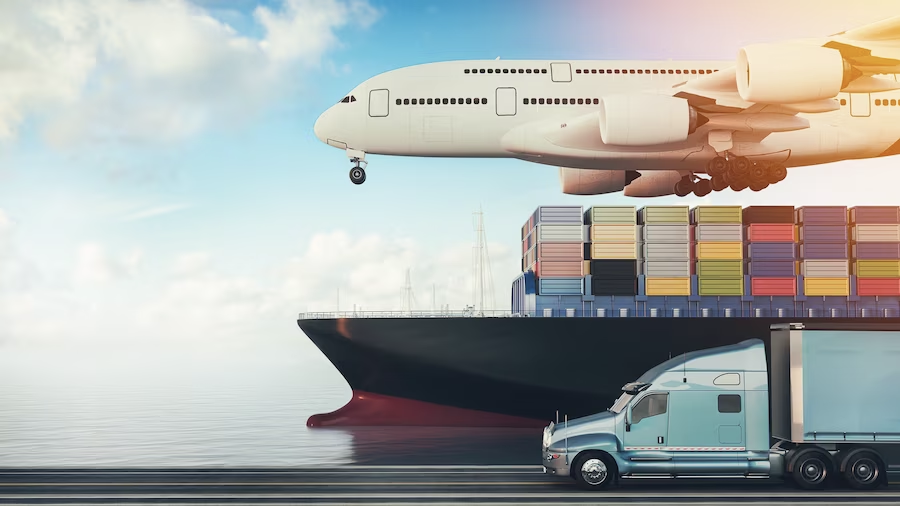Exporting isn’t just about shipping—it’s about smart packing that protects your goods and saves costs. From handcrafted items to heavy equipment, the right techniques and materials can prevent damage and delays. Learn how top Indian exporters pack efficiently and how you can do the same with ease.
Weight vs. Volume: Optimizing for Cost Efficiency
So, you’ve finally got a big export order—congrats! But before you start bubble-wrapping everything like crazy, let’s talk logistics. One of the biggest things people forget in the excitement of shipping goods abroad is the difference between weight and volume. And trust me, getting it wrong can cost you more than just a few extra bucks.
If you’re shipping internationally, carriers don’t just charge based on what your goods weigh—they also look at how much space your goods take up. That’s where the whole weight vs. volume debate kicks in. And knowing how to optimize for both can make a real difference to your bottom line.
Let’s break it down in a way that actually makes sense (and won’t put you to sleep).
What’s the Difference, Really?
Okay, so imagine you’re shipping a huge box of feathers and a small box of dumbbells. The feathers weigh next to nothing, but they take up a ton of space. The dumbbells, on the other hand, are super heavy but compact. Now here’s the kicker: depending on how your logistics partner calculates freight charges, you might end up paying more to ship the feathers. Sounds crazy, right?
Carriers use two types of weight:
- Actual weight: What your package weighs on a scale.
- Volumetric (or dimensional) weight: A number they calculate based on the size of the box.
Whichever is higher is what you get charged for. So yes, a box of pillows could be more expensive to ship than a box of bolts.
For the best Indian exporters who deal with both light consumer goods and heavy industrial items, this knowledge isn’t optional—it’s essential.
How to Play It Smart with Packaging
Packing smart isn’t about being an engineer—it’s about strategy. For lightweight, bulky items, reduce packaging size to cut down volumetric weight and save on shipping costs. For heavier items like metal parts, focus on protection, as actual weight outweighs volume charges. Top Indian exporters often team up with packaging consultants to customize box sizes, ensuring consistent savings. Also, don’t overdo the padding—extra material can increase volume without adding real protection. Instead, use efficient options like foam inserts or honeycomb paper to secure goods without inflating the package size. Small changes in packing can lead to big gains.
Choose Your Carrier Wisely
Now comes the fun part—shopping around for shipping partners. Just like you wouldn’t order the first thing you see online, you shouldn’t jump into a contract with the first freight company that pops up. Different carriers have different formulas for calculating volumetric weight.
Some offer better rates for heavier cargo, while others are more forgiving with large but light shipments. For instance, if you mostly deal with apparel, cushions, or lightweight furniture, go for a carrier with favorable volumetric rules. If you’re shipping engines, raw materials, or heavy-duty tools, focus on those who give better actual weight pricing.
Many of the best Indian exporters actually split their logistics operations between multiple partners. One carrier might be ideal for small, light parcels going by air, while another is better for heavy freight headed for sea ports.
It’s all about mixing and matching to suit your needs and save money—and yes, that’s allowed!
Eco-Friendly Materials in Modern Logistics
Let’s be honest—packing stuff for export isn’t exactly the most exciting part of the job. But what if we told you it could actually help you save money, impress clients, and do something good for the planet all at once?
Yup, we’re talking about eco-friendly packaging materials—the new MVPs of the logistics world.
If you’re in the export game, whether it’s lightweight sarees or heavyweight machinery, your packaging decisions matter more than you think. And if you want to stand shoulder to shoulder with the best Indian exporters, embracing sustainable materials is a smart move—not just a trendy one.
Let’s break it all down.
Why Eco-Friendly Packaging Is the Future (and the Present)
Traditional packaging—think bubble wrap, Styrofoam peanuts, and endless plastic—is slowly being shown the exit door in global logistics. And it’s not just because the planet needs a break (although, yes, it really does). It’s also because regulations are tightening, buyers are asking for cleaner alternatives, and carriers are rewarding low-impact shipping.
So if you’re still wrapping your goods like it’s 2005, you’re not only harming the environment—you’re probably spending more than you should.
Sustainable packaging materials can reduce your shipment’s weight, take up less space, and often qualify for better logistics deals. Lighter shipments mean less fuel consumption, which translates into lower carbon emissions and happier shipping companies.
The best Indian exporters already know this. That’s why they’re swapping out old-school plastic for new-age paper-based fillers, biodegradable wraps, and compostable mailers that are good-looking and good for the Earth.
The Green Packing List: What You Can Use Instead
You might be wondering, “Okay, but what do I actually use instead of the usual stuff?” Don’t worry—we’ve got you covered.
1. Corrugated Boxes
Let’s start simple. These aren’t your average cardboard boxes. Corrugated cartons offer greater strength, reduced weight, and improved recyclability. Plus, they come in all sizes, which means you can cut down on filler material too.
2. Honeycomb Paper Wrap
Say goodbye to plastic bubble wrap and hello to the fancy, eco-version. Honeycomb paper wrap looks cool, works great, and doesn’t hurt the planet.
3. Biodegradable Packing Peanuts
They may look like the Styrofoam ones, but these dissolve in water and don’t pollute oceans. You can even try it at home—it’s oddly satisfying.
4. Recycled Kraft Paper
A classic. It’s strong, simple, and makes your packaging look rustic-chic. A favorite among exporters who care about first impressions.
These materials don’t just make your packaging more sustainable—they also make it look premium and professional, which clients love.
You, Your Customers, and a Cleaner Supply Chain
Here’s the thing: your clients—especially international ones—are way more eco-conscious than they were a few years ago. More and more companies now prefer suppliers who take sustainability seriously. Some even require certifications or a sustainability report before doing business.
That means using eco-friendly packaging isn’t just about feeling good—it’s about staying competitive.
By switching to greener materials, you’re also simplifying things for your customer. They don’t have to worry about how to recycle your packaging or whether it’s harming the planet. You’ve already taken care of it.
If you want to stand out in a crowded market, this is an easy win. And trust us, the best Indian exporters are already using it to their advantage.
They’re not just shipping goods—they’re shipping a message that says, “Hey, we care.”
Small Swaps, Big Impact
You don’t have to change everything overnight. Start with one or two eco-friendly materials and build from there.Consider replacing plastic tape with water-activated paper tape for a more eco-friendly option. Or use recycled filler instead of foam.
Each change may feel small, but over time, it adds up—especially if you’re exporting at scale.
Even your logistics partners might thank you for it. A growing number of freight and courier companies now favor senders who minimize plastic usage.. Some even offer discounts or special services for companies that meet green criteria.
So, by going green, you’re not just helping the environment—you’re actually making your whole logistics and supply chain smarter and leaner.
Lightweight Cargo Trends in Air Freight
Air freight might sound like the fancy, expensive option—but when you’re shipping lightweight cargo, it’s often the smartest way to move products fast and efficiently. Whether it’s mobile phones, designer garments, or Ayurvedic skincare kits, lighter goods are dominating the skies.
So what’s behind this shift, and how can you benefit from it?
Let’s take off (pun intended) and explore what’s fueling the rise in lightweight exports via air—and why many of the best Indian exporters are already onboard.
Speed Is the New Currency
In a world where customers expect next-day delivery—even internationally—speed has become non-negotiable. Lightweight cargo fits beautifully into air freight’s biggest strength: speed.
Think about it. Shipping something light like fashion accessories or organic teas by sea might save you a bit of money, but it takes weeks to arrive. By then, your customer has already moved on (or worse, asked for a refund).
That’s why businesses exporting small but high-demand items are shifting to air. It’s fast, reliable, and getting more affordable thanks to competition and better tech.
This trend is especially noticeable among startups and D2C brands, many of which are run by—you guessed it—the best Indian exporters tapping into international e-commerce.
Carriers Are Building for Light, Not Just Heavy
It used to be all about bulk: how many containers can we fill, how much weight can we push. But airlines are adapting. They’re now designing their cargo holds and pricing models to better support lightweight shipments.
Some are even launching dedicated aircraft just for e-commerce-sized cargo, which often falls into the light-but-voluminous category. This shift is great news for Indian exporters who deal with everything from jewelry to personal care products. Smaller packages now get better priority and pricing than ever before.
And with more air carriers entering the cargo market post-pandemic, the rates are becoming more competitive—especially for exporters shipping light goods regularly.
Dimensional Weight: Know Before You Go
Remember our chat about volumetric (dimensional) weight earlier? It really comes into play in air freight.
Since airlines have limited space, they don’t just charge by actual weight—they calculate based on how much space your cargo occupies. That means smart packaging (read: minimal, tight, eco-friendly) isn’t just good for the Earth, it’s great for your air freight bill.
The best Indian exporters are now working directly with freight forwarders to optimize packaging before even booking air space. That level of planning can shave off thousands in costs over time—especially if you ship weekly or monthly.
Pro tip: Use lightweight fillers and right-sized boxes to beat volumetric penalties. Your logistics partner will thank you.
The E-Commerce Export Boom
Here’s where it gets exciting.
India’s e-commerce exports are skyrocketing, with lightweight products like skincare, fashion, wellness items, and handicrafts leading the charge. And where are they all heading? Air freight lanes.
Platforms like Amazon Global Selling and Etsy have made it easier than ever for Indian brands to sell abroad, but these platforms demand fast delivery and clean, compact packaging. Air freight is practically the only way to meet that standard.
That’s why many small-to-mid exporters are choosing Fulfillment by Amazon (FBA) or using 3PL partners with air freight integrations. It’s a little more expensive, sure—but the speed and customer satisfaction pay off.
You don’t need to be a giant exporter to take advantage. In fact, some of the best Indian exporters started small—shipping just a few kilos of product at a time by air.
They grew by using smarter logistics, not bigger budgets.
How Tech Is Changing Export Packaging
You’ve heard of smart homes, smart cars, even smart fridges—but have you heard of smart packaging?
No, we’re not talking about packaging that talks back (yet), but technology is definitely transforming how exporters pack, track, and protect their products. And if you’re aiming to compete with the best Indian exporters, this is one tech wave you don’t want to miss.
Gone are the days when packaging was just “box, tape, and label.” Today, it’s a full-blown science powered by data, automation, and yes—some pretty cool gadgets.
Let’s unpack (pun fully intended) how tech is reshaping the future of export packaging.
Automation = Precision + Speed
First things first: automation is now being used in packaging lines to make faster, more accurate, and standardized exports. Machines can now measure a product and instantly select the right-sized box, fill it with just the right amount of protective material, and seal it in seconds.
This doesn’t just save time—it reduces human error and packaging waste, both of which are expensive in the long run.
Big exporters already use this in their fulfillment centers, but even small and mid-sized Indian businesses are now adopting modular automation tools to streamline their logistics and supply chain.
And the best part? It’s becoming more affordable. What once cost lakhs can now be done with compact devices and SaaS-based platforms that fit into lean budgets.
Smart Labels and Real-Time Tracking
Here’s a scenario: your shipment gets delayed, and you have no idea where it is. Your client is panicking. You’re panicking. Everyone’s upset.
Now enter: smart labels and IoT-enabled tracking.
These nifty little tags can be scanned at every checkpoint and updated in real-time on a dashboard. Some even monitor temperature, humidity, shock, or tilt, making them perfect for sensitive exports like electronics, pharmaceuticals, or perishables.
For Indian exporters sending goods halfway around the world, this kind of visibility is a game-changer.
The best Indian exporters are already integrating these into their workflow—not just for customer satisfaction, but for accountability and smoother customs clearances too.
AI-Powered Packaging Design
This one’s a bit sci-fi, but it’s already in play. Companies are now using AI tools to design packaging that’s lighter, stronger, and optimized for international shipping routes.
For example, software can now simulate how your box would behave when stacked in a shipping container, exposed to turbulence during a flight, or handled at a busy port.
Based on that data, it suggests the best material, shape, and protective layers to use. This means fewer damages, fewer returns, and lower shipping costs.
And yes, even some of the best Indian exporters in fashion, electronics, and consumer goods are using these tools to design export packaging that balances safety, branding, and efficiency.
So don’t be surprised if your next cardboard box was, in fact, designed by an algorithm.
Eco + Tech = The New Export Standard
What happens when you mix sustainability with innovation? You get smart eco-packaging—materials that aren’t just planet-friendly but also performance-optimized using tech.
Think biodegradable plastics embedded with QR codes, or compostable wraps that still meet international shipping toughness standards.
These advancements allow Indian exporters to meet global sustainability goals without sacrificing safety or style. Some even use blockchain-enabled packaging IDs to prove their materials are ethically sourced—a big plus in markets like Europe and the U.S.
And if you’re planning to sell premium or eco-conscious products internationally, this combo of green and smart might just become your biggest asset.
Final Thoughts: It’s Time to Pack Smarter
Smart packing is the backbone of efficient global exports. Leading Indian exporters optimize cost by balancing weight vs. volume, customizing packaging, and selecting the right carriers. Eco-friendly materials like honeycomb paper and biodegradable wraps not only reduce waste but also impress global buyers. Tech tools—like smart labels and AI-driven box design—add precision and speed. Whether you’re exporting light goods or heavy machinery, strategic, sustainable, and tech-enabled packing can give your business a competitive edge.



